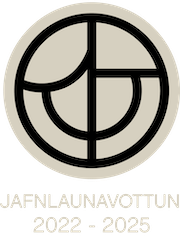Víxlverkun jarðhita, jarðskjálfta og kvikuhreyfinga á Hengilssvæðinu - verkefni lokið
Fréttatilkynning verkefnisstjóra
Allt í náttúrunni tengist. Verkefnið kannaði sérstaklega hvernig kviku- jarðskjálfta- og jarðhitatengd ferli víxlverka með beinum kröftum, eða bergspennum, sem berast um jarðskorpuna. Þungamiðja rannsóknanna var á Hengilssvæðinu á SV-landi, og var jarðeðlisfræðilegum og jarðhitatengdum gögnum beitt til að skoða hvernig ferlin tengjast.
Niðurstöður verkefnisins sýna m.a. að langvarandi sig á austanverðu Hengilssvæði átti þátt í að hrinda af stað tveimur Mw 6.1 jarðskjálftum á Suðurlandi í maí 2008; Húsmúli, þar sem mikil skjálftavirkni fylgdi niðurdælingu jarðhitavökva, var þegar forspenntur af jarðhitavinnslu áranna á undan á Hellisheiði; og innskot af kviku- eða jarðhitavökva geta valdið misgengishreyfingum. Skammlíft landris átti sér stað á austanverðu Hengilssvæðinu veturinn 2017-2018, en ekki er vitað hvort þar var jarðhitavökvi eða kvika á ferð. Dæling jarðhitavökva í Húsmúla hefur valdið nokkrum tímabilum með landrisi og landsigi á víxl. Í heildina séð sýnir verkefnið mikilvægi þess að taka tillit til bergspenna þegar skilja á hin ýmsu ferli sem eiga sér stað á háhitasvæðum undir áhrifum kvikuhreyfinga og jarðskjálfta.
English:
Everything is connected. This project focused specifically at how magmatic, tectonic, and geothermal processes are connected through physical forces, or rock stresses, that are transmitted in crust. The study area was the Hengill area, SW Iceland, and seismic, geodetic and geothermal data was used to research the stress interactions. The results of the project address many stress interactions, for example that long-term subsidence in the east Hengill area helped trigger the two Mw 6.1 earthquakes in south Iceland in May 2008; the Húsmúli region, which experienced intense seismicity at the start of geothermal wastewater injection, was already pre-stressed by years of geothermal production; and that magmatic or hydrothermal fluid intrusions can trigger fault movements. In the project, faults were mapped both on the surface - using conventional field techniques & radar satellites - and in the subsurface using high-precision earthquake locations. A short-lived inflation episode was discovered in the eastern Hengill area in 2017-2018, however, it is unknown if the inflation is caused by geothermal or magmatic fluids. The Húsmúli injections in the western Hengill area have caused series of uplift and subsidence episodes. Overall, the project highlights the importance of stress interactions for high-temperature geothermal areas where magmatism and tectonics play significant roles.
Information on how the results will be applied:
The results are already applied in the published research. In practical terms, stress maps can for
example be used to choose favourable locations for geothermal wastewater injection. In theory, the stress maps can also be used to estimate how geothermal production affects patterns of volcanism, for example by arresting or changing paths of dikes and sills propagating in the crust. The mapped faults on the surface and in the sub-surface add to a growing catalogue of active faults in the region. The deformation and seismic data collected and analysed can be used for further studies and models of the region. The work lays the foundation for more detailed time-dependent stress maps that form the basis of improved earthquake hazard mitigation.
A list of the project’s outputs:
• 7 peer-reviewed papers, numerous conference proceedings
• 1 PhD degree, 2 MS degrees, significant progress towards two more PhD degrees
• Improved geodetic data sets and deformation models for the Hengill area
• Improved earthquake relocation techniques and improved faults maps for the Hengill area
• Improved understanding of stress interactions
• Improved understanding of geothermal systems and the effects of geothermal production
• Strengthened collaboration inside and outside of Iceland in geoscience
Heiti verkefnis: Víxlverkun
jarðhita, jarðskjálfta og kvikuhreyfinga á Hengilssvæðinu/ Interaction of
geothermal, tectonic, and magmatic processes in the Hengill area, SW-Iceland
Verkefnisstjóri: Halldór Geirsson, Háskóla Íslands
Tegund styrks: Verkefnisstyrkur
Styrktímabil: 2017-2019
Fjárhæð styrks kr. 55.369.000
Tilvísunarnúmer Rannís: 174377


